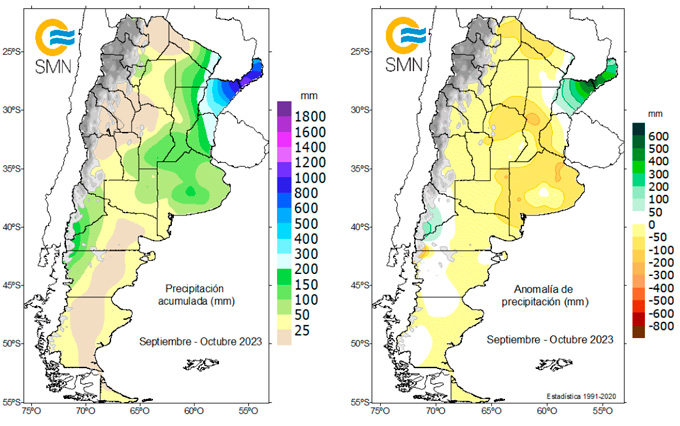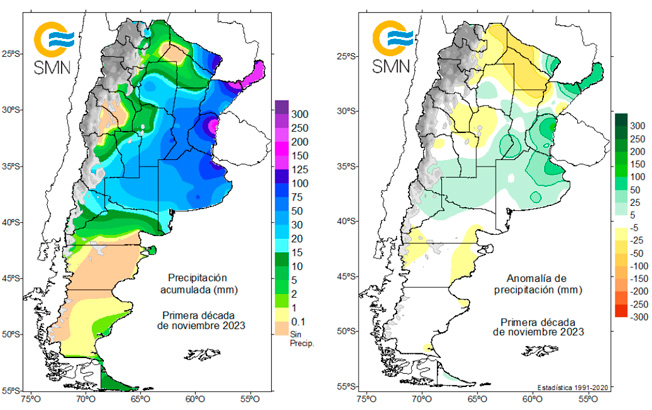Argentine Beekeeping
BEEKEEPING SEASON 2023-2024 IN ARGENTINA
November 18th, 2023
 Versión en Castellano
Versión en Castellano (Espacio Apícola, November 18th, 2023) So far in the beekeeping season in Argentina, lemon honey was a failure in Tucumán, a province in the north of Argentina, as well as in the southeast of Corrientes, a province in front of Brazil in the east, where excess of rainfall ruined the honey harvest. For its part, the Monte Nativo Cordobés (Cordoban native forest) was very weak compared to previous years.
(Espacio Apícola, November 18th, 2023) So far in the beekeeping season in Argentina, lemon honey was a failure in Tucumán, a province in the north of Argentina, as well as in the southeast of Corrientes, a province in front of Brazil in the east, where excess of rainfall ruined the honey harvest. For its part, the Monte Nativo Cordobés (Cordoban native forest) was very weak compared to previous years.The lack of rain and temperature fluctuations have delayed the season in the rest of the country between 15 and 30 days, with the low minimum temperatures being very inportant in the Pampa Húmeda, Río Negro, Mendoza, where the minimum temperatures were below and in some cases well below the historical average that has been established between 1991 and 2020 as a reference period to determine anomalies according to the National Meteorological Service in Argentina (SMN).
As far as soil moisture is concerned, the drought of previous years lasted until September and in a significant area until October. Fortunately, many herbs of beekeeping interest sprout and flower with the first downpour, at least where glyphosate is not spread, even so in many areas rain is needed for honey production.
In the following SMN map on the left you can see the rainfall values during September and October 2023 and the anomaly with respect to the historical average on the right one. Only one arc in Mesopotamia region, painted white to the east, shows normality in that narrow strip, then towards the northeast in the entire province of Corrientes and in Misiones the rainfall was above normal values. The rest of the country, colored in light and dark yellow and also orange, shows that the general rainfall deficit at the start of spring was more than 50 mm and up to 200 mm.

Already in the first ten days of November the phenomenon was reversed in a large part of the territory with a greater concentration of beehives. In the following SMN map on the left, the records of these first ten days of the month show normal or just above normal values of rainfall, however these still do not compensate for the water stress nor satisfy the demand of the soil profile for planting crops related to beekeeping interest such as the sunflower. Furthermore, the evapotranspiration caused by the wind and occasional high temperatures shots do not allow us to see a significant impact on the vegetation, but the situation of previous months in the central area of the country has been reversed. On the contrary, the entire coastal strip of the Uruguay River, on the border with Uruguay and Brazil, from the middle of the province of Entre Ríos to the north, where the level of precipitation had been normal or above normal, is being greatly affected by the excess of rain in this month of November.

Finally, what we pointed out at the beginning, in the following SMN map on the left, note how the minimum temperatures of the first ten days of November (Celsius degrees), are 2 to 3 centigrades degrees below normal (map on the right), which added to Less vegetative development due to water stress is delaying the development of the hives.

Information generated by "Espacio Apícola" the Argentine Beekeepers' Magazine apicultura.com.ar

